The first record of the Golubac Fortress is 1335. Before its construction there were Roman, then Byzantine, settlements where the Danube narrows, carving its way through the Carpathian Mountains at the eastern limits of the Great Hungarian Plain.
The fortress may have been built by the Hungarians, Bulgarians, or Serbs.
While this southern side of the Danube was within the Roman Empire, the 9 towers of the fortress itself appear to be of medieval construction. The last tower, and the one closest to the water, was constructed by the Ottomans at the end of the 15th century.
A chain extended across the river, which at that time, before the construction of the Iron Gates Dam, was much lower and narrower. The chain was a money making proposition, used to extort tolls from those traveling up or down the river, and of course for defensive purposes.
Although Serbia is not in the EU, the EU wisely financed the renovations to this marvelous fortress, which opened to the public in 2019.
The fortress was never conquered, though at least one occupier was starved out. Each of the towers is separate. I elected to join the tour to the top. It is not for the faint of heart. You need both hands and good shoes to “conquer” the tower.
Over 9000 arrowheads of various types were found during reconstruction, including those used to spread fire. Many round stones used in catapults are displayed.
In 1335 it was under Hungarian rule. The Serbians were in control of the castle at the time of the victory of the Ottomans in the Battle of Kosovo, 1389.
King Sigismund of Luxembourg (1368-1437) was Holy Roman Emperor, King of Germany and Bohemia, and married Mary, Queen of Hungary, making him King of Hungary and Croatia. He led a Crusade.
King Sigismund ceded Golubac as a personal fiefdom to “Despot” Steven Lazarević in 1403. A contract was signed in which it was agreed that Golubac, Belgrade, and Mačva would be returned to Hungary upon Stefan’s death. When Stefan died, Sigismund sought to fulfill the contract, and Belgrade and Mačvawere handed over. But the commander of Golubac demanded compensation of 12,000 gold ducats.
When Sigismund refused to pay, the Serb commander of Golubac handed the fortress to the Turks.
Sigismund spent the rest of his life trying to recover Golubac. In 1428 the Ottomans withstood an attack by 25,000 infantry, 6000 Wallachian archers, 200 Italian artillery and a number of Polish cavalry, as well as a number of ships. A famous Polish knight, Zawisza Czarny, died defending Sigismund’s retreat.
A study of the various battles and the control of this castle would require almost a complete recitation of European history so I will stop here!
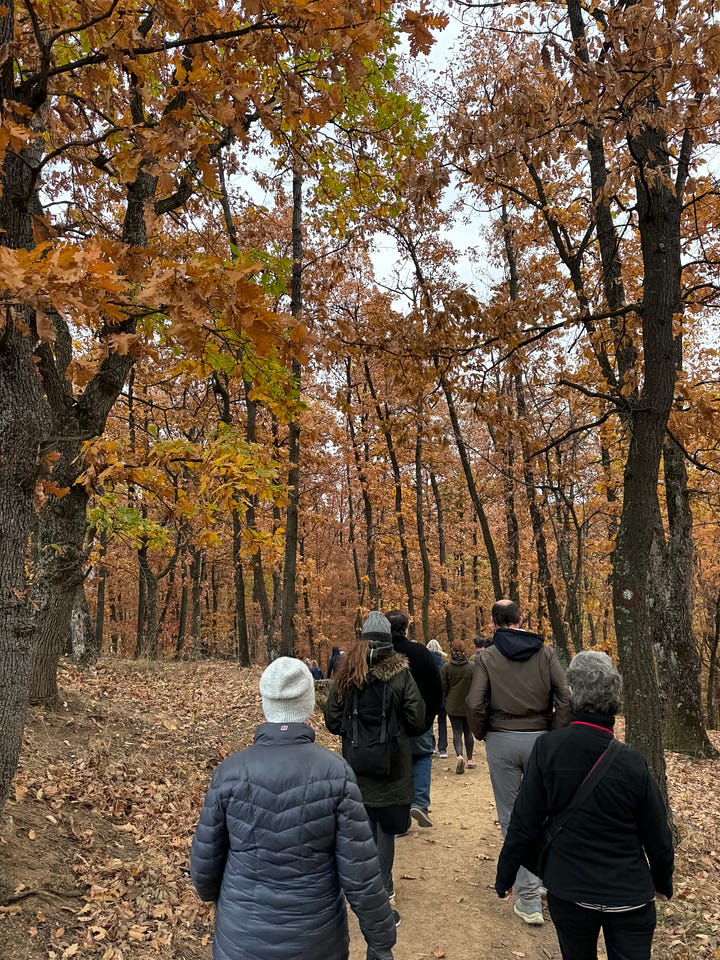
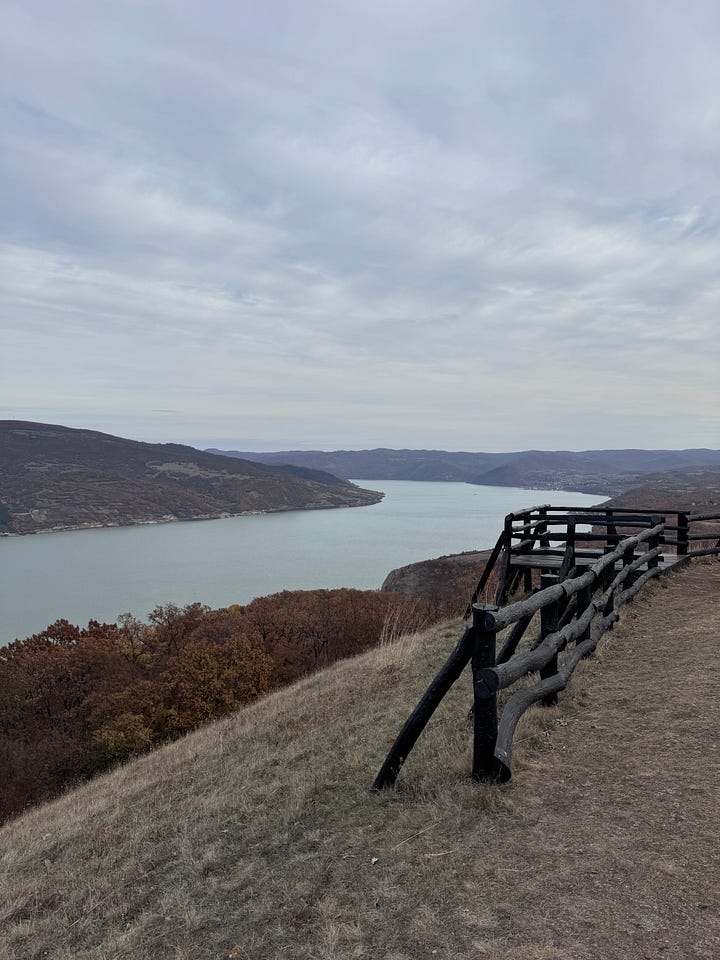
We then headed up to the top of the gorge, at an altitude of 1300 feet and hiked to the rim, enjoying the beauty of the oak and beech forest and the vistas of the Danube.
On the way down we stopped at an eclectic local bed and breakfast, with the traditional plum brandy, fruit and other local delicacies.
The highlight of the day, and perhaps the trip, was the journey through the Iron Gates.
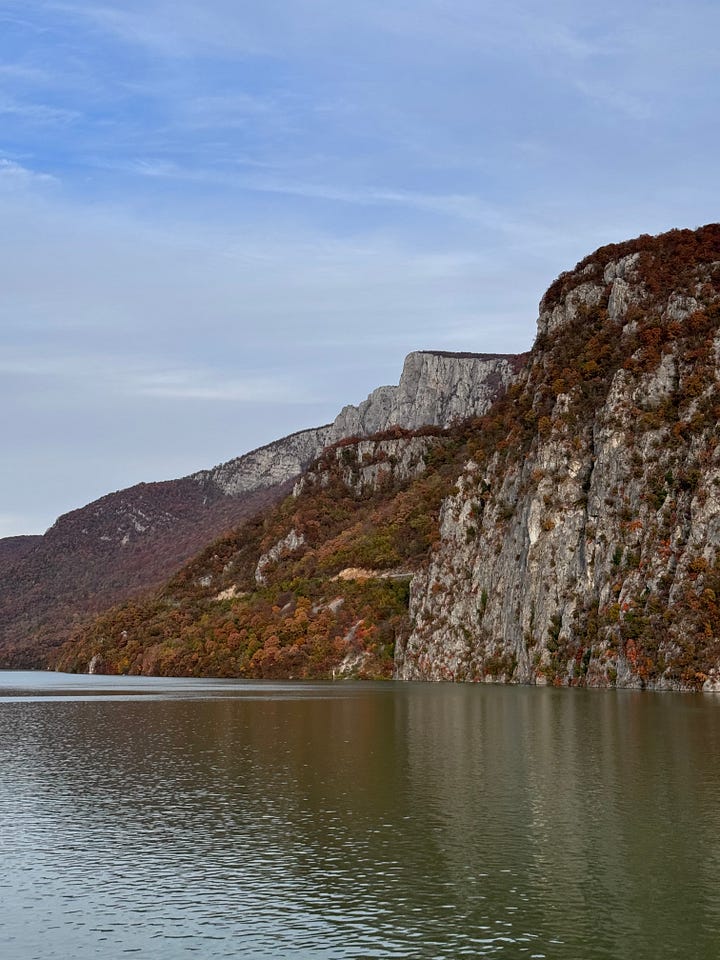
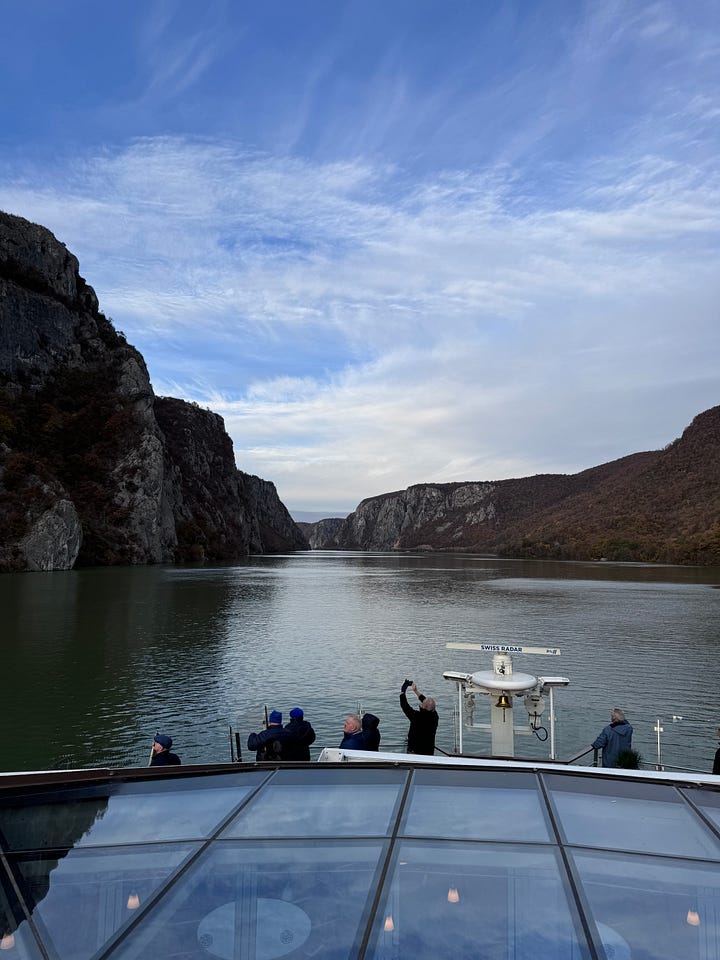
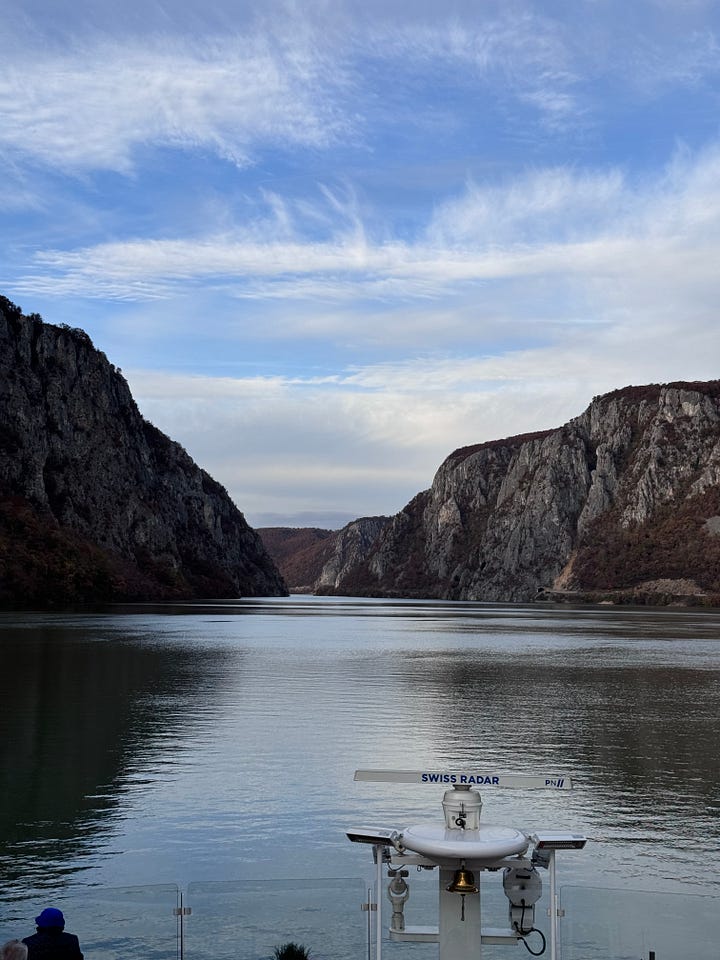
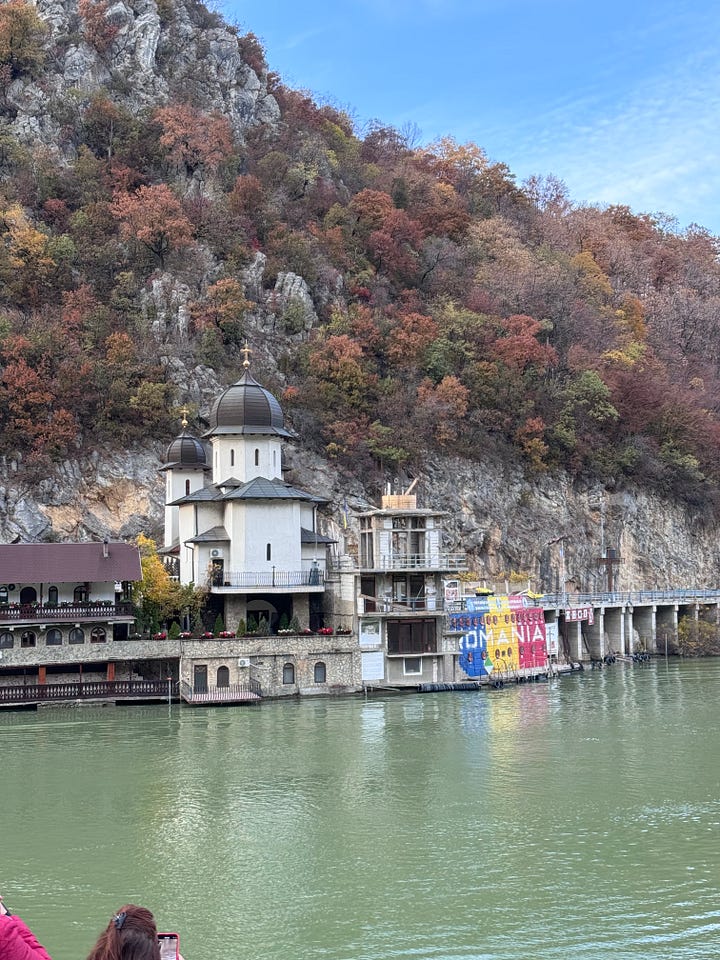
The Iron Gates Dam was constructed in the 1970’s, requiring the displacement of 23,000 people and raising the river level here by 130 feet.
Most interesting to me was the Roman memorial called the Tabula Trajan, a plaque that commemorates a military road built by the Emperor Trajan in the early 2nd century AD on the Serbian side of the river.
On the Romanian side is a 40 meter tall rock carving of Decebalus, the last king of the Dacians, the tallest European sculpture in natural rock. Decebalus (AD 87-106) was the last king of Dacia, a Romanian hero who fought many battles against the Romans, preserving the independence of present day Romania from Roman emperors Domitian and Trajan.
I spoke with our Captain as we dropped through the locks and learned that Russian is the official language of all the lock masters from Bucharest to the Black Sea (although this one was speaking Serbian), while German is used from Bucharest upstream.
Now we are in Vidin, Bulgaria. Thank you for your comments, shares and likes! We have good cell service here so I will try to catch up today.
“Travel is the only thing you buy that makes you richer!” Thanks for coming along and welcome new subscribers!












Simply amazing!
Fascinating history and beautiful scenery!